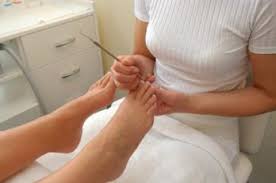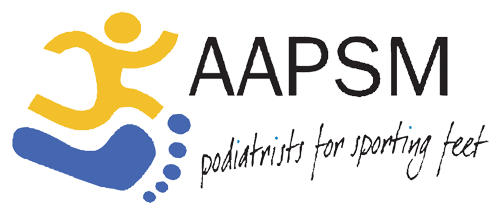Ingrown Toenail
An ingrown toenail can be very painful, especially once it gets infected. But if they are professionally treated, the instant relief you get from them is palpable.
Thankfully, this is a feeling we can provide you with, as our Gold Coast podiatrists have extensive experience treating these nail disorders.
What is an Ingrown Toenail?
Officially known as onychocryptosis, ingrown toenails are a common affliction that affects people of all ages. Its symptoms can range from mildly discomforting to downright painful and can impact your ability to work, participate in sports, or even concentrate at school.
Ingrown toenails occur when there is a protrusion into the skin area around the nail base or nail of your big toe. Depending on its severity, it can result in inflammation, trauma, and infection, which can significantly increase the level of pain you experience as the nail grows into the skin.
What are the Causes of an Ingrown Toenail
Nails grow from an area below the skin called the nail matrix. This area is located at the bottom of our fingers and toes and can produce nails that vary in shape and size—for instance, curved, narrow, flat, or wide.
Everyone's nail bed is different, but unfortunately, people with broad or curved toenails are more susceptible to suffering from the discomfort of an ingrown nail.
There are several reasons why this happens, with some of the most common causes being as follows:
A habit of picking your nails
Atypical nail shape
Bone Spurs (in very rare cases)
Bunions
If you wear shoes like high heels, pointed-toes, or football boots that are tight-fitting
Improper foot movement patterns
Nail trauma
Not cutting your nails properly
Poor feet hygiene
Sweaty feet
Anyone can succumb to unsightly toenails. But teenagers, older people, and those suffering from conditions like diabetes or circulation are particularly at risk of developing this condition.
Symptoms of an Ingrown Toenail
Most commonly, ingrown toenail pain is localised underneath the nail fold at the edge or end of the big toe.
However, there can be some other symptoms associated with this condition. They include:
Sore when touched, stood on, or banged into
Swollen, tender, and hot area
Increased pain (especially when wearing shoes or under bed sheets)
Infection and redness
Oozing puss (in the case of a severely infected ingrown toenail)
Growth of hypergranulation tissue
However, while these symptoms might successfully indicate that you have an ingrown toenail, they might also be representative of other conditions, such as a thickened nail, subungual corn, or an involuted nail.
For this reason, it is important to arrange a consultation with a podiatrist or foot specialist who can give you an accurate diagnosis and advise you on the best treatment option.
Diagnosing an Ingrown Toenail
Once you've made an appointment with one of our Gold Coast podiatrists, the diagnosis process is fairly straightforward.
Most ingrown toenails are confirmed through a physical examination. However, if the podiatrist suspects that the growth of the nail root has been affected by an injury, is infected, or might possibly result in other foot problems, then they might order an X-ray to fully understand the scope of your issue.
Treatment Options for Ingrown Toenails
At Gold Coast Foot Centres, we have treated hundreds of cases of ingrown toenails over the years.
If you schedule an appointment with us to relieve you of your painful symptoms, we'll first do a thorough inspection to ascertain the severity of your condition.
Once we have done this, we'll then determine the best course of action to help you heal properly, whether that be surgical treatment or non-surgical remedies like ingrown toenail removal.
Initially, we will focus on relieving you of pain and reducing any inflammation or infection that might have resulted from the ingrown toenail.
If we can see that your toenail is not infected, we will attempt to trim your nail edge to make it nice and straight. This is a non-surgical procedure that, hopefully, will prevent the nail from protruding into your skin in the future.
Should your condition be more severe or frequently recurring, we will discuss a more permanent solution to prevent ingrown toenails from bothering you again. This might involve surgery under local anaesthetic, with some of the more common treatments being a total or partial nail avulsion (PNA) with matrix sterilisation, or what is known as a wedge resection.
All of these procedures are painless when performed under local anaesthetic and involve a minimal recovery time. Our podiatrist will go through these options with you after diagnosing your condition.
In most cases, people who have these treatments performed on them can return to work the next day (if they are allowed to wear sandals or thongs for a couple of days).
Treatment for Ingrown Toenail at Home
If the level of discomfort you are experiencing is mild, and you can not see any evidence of infection, then you can try and treat ingrown toenails at home.
Some good ways to reduce or even stop your suffering are as follows:
Keep your feet clean by regularly washing them
Cut your toenails (or get someone else to do so) with a proper pair of nail clippers to keep your nails straight.
Soak your foot in warm water mixed with one tablespoon of salt for between 10 to 15 minutes twice a day. This can relieve tenderness and reduce swelling.
Try gently lifting the entire nail, but stop immediately if this causes further pain.
File the corners of your nail into smooth edges.
Do not wear tight-fitting shoes or pointed-toed footwear.
If these home treatment remedies do not work, then you are advised to seek medical attention from a podiatrist.
What Happens if I Ignore an Ingrown Toenail?
If you ignore the symptoms or pain associated with an ingrown nail, it can lead to serious complications.
This might include bone infection, open sores and ulcers, compromised circulation, and potentially even diabetic wounds that might require you to have ingrown toenail surgery.
How to Prevent an Ingrown Toenail
As ingrown toenails can be very painful, you should do all you can to reduce your risk of getting them.
Sadly, you can't avoid certain external factors, such as injury or trauma, and aren't able to change your nail shape, so it is impossible to safeguard yourself from onychocryptosis completely. But, there are some things you can do to minimise the risks overall.
Firstly, you should always trim your toenails straight across and file them around the edges to avoid sharp bits from protruding into your skin. Additionally, you should consider wearing breathable or open-toed shoes that help to prevent sweaty feet and avoid wearing shoes with less than a thumb's width between the tip of the shoe and the toe.
If you have poor circulation, you should also look to improve that while regularly washing your feet to keep them hygienic, and keeping your feet dry as much as possible can be other good preventative measures.
When to Seek Medical Attention
While you might shrug off the initial pain in and around your nail bed, if you are suffering from a severe ingrown toenail infection, you should seek medical attention immediately from a qualified and experienced podiatrist. As it can spread quickly, you will want to prevent infection from getting worse.
Additionally, you should also do this if you feel as if your toe is throbbing, displaying excessive redness, discharging pus, and you are experiencing general tenderness in the surrounding tissue of your nail edge.
Moreover, if your ingrown toenail has made you develop a fever, is making you feel unwell, or is severely impacting your ability to perform day-to-day tasks, you should make an appointment with our compassionate team of Gold Coast podiatrists immediately.
FAQs about Ingrown Toenails
-
An ingrown toenail is a painful condition in which the nail grows into the skin. It can affect people of all ages.
-
Everyone's toenail grows differently. However, the way you cut them should be the same. We recommend not cutting toenails too short and ensuring that you cut toenails straight across to ensure there are no sharp edges that may irritate your skin.
-
Ingrown toenails usually become infected if you ignore them. So, at the first sign of an issue, you should contact your podiatrist.
Additionally, make sure you regularly wash your feet and don't wear closed-in shoes.
-
Using waxed dental floss can be an excellent way to treat an ingrown toenail because it helps to separate the skin from the nail.
Doing this may encourage the nail to grow above your skin and not into it.
-
In most cases, people who have toenail surgery performed on them can return to work within 24 to 48 hours, so long as they can wear open shoes.
The recovery time might be longer if your nail plate has suffered trauma. In this case, your podiatrist will advise you accordingly.






